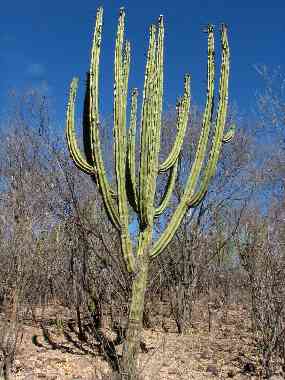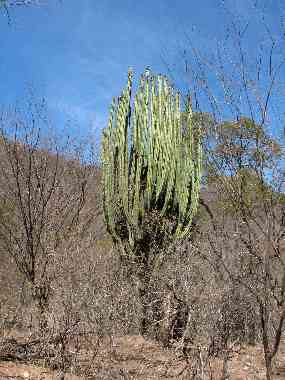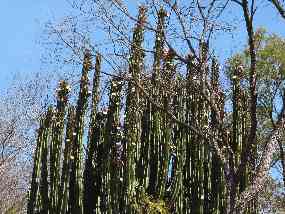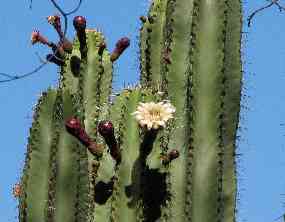Research and Conservation in Southern Sonora, Mexico
Stenocereus montanus (sahuira)
Near the upper elevational limit of tropical deciduous forest Stenocereus montanus replaces Pachycereus pecten-aboriginum as the commonest columnar cactus. It takes a good eye to distinguish between the two species when not in flower. Sahuira has distinct areoles on mature stems with tufts of brown hairs, as opposed to etcho's coalescing areoles and longer spines. The spines on sahuira fruit come off easily when ripe.
The fruits come in three distinct colors: amarilla (orange), rojo (red), and blanco (white) (Felger 2000). Orange is the most common. All are delicious, and are more highly regarded than pitahaya dulce.
Sahuira ranges from southern Sonora to Colima. The nocturnal flowers are pollinated by bats and the juicy fruit is consumed by bats and birds. Little else is known about its ecology.



